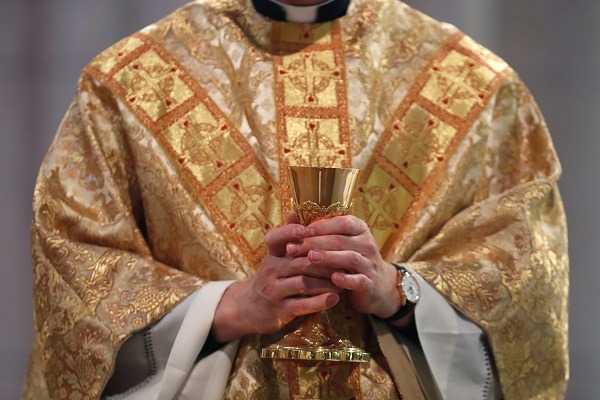Liturgical clothes, often known as liturgical vestments, refers to the apparel worn by priests of various grades during religious rituals and festivals.
These garments vary in several ways, including color, depending on the duration of year and the rituals or celebrations that are taking place.
However, liturgical clothing is much more than simple, embellished garments put on by ministers. The act of wearing them has a strong symbolic value for both the priest and those who recognize him as a messenger of God on earth whenever they see him dressed like this.
Therefore, liturgical clothing must be distinct and distinguishable from any other sort of garment worn by a priest outside of the celebration. These clothes belong to a holy area, no less holy as the liturgy’s prayers and gestures, as well as the numerous rituals that define religious events.
Liturgical Clothes Colors
During religious rites, Catholic priests’ liturgical vestments and the many sacred vestments they wear differ according to a range of colors that have specific symbolic meanings.
White represents the joy and purity that comes from the faith. Irrespective of the liturgical season or festival, it is one of the most prominent colors in liturgical garments worn by priests every day. It has a special connection to the Easter and Christmas worship of Jesus and Mary. It also represents the resurrection, with Christ rising to strengthen the Faith.
Green, a sign of hope, persistence, and continuous listening, is the most utilized color at Sunday Masses and weekdays outside of designated celebrations. It walks alongside priests and the people who turn to them on a daily.
Purple is associated with penance, patience, and mourning. It’s especially popular around Advent and Lent. Purple liturgical vestments are used for Mass for the Deceased, however black vestments can be worn alternatively.
Red represents Christ’s passion and the bloodshed in martyrdom by Him and the Apostles. On Palm Sunday, Good Friday, Passover, in festivities devoted to the Lord’s Passion, and in the feast of the Apostles, Evangelists, and Sacred Martyrs, this is utilized for liturgical garments.
Gold is the most somber of colors, and it is utilized throughout the year, even as a substitute for other liturgical colors.
The various liturgical garments
Amice: a rectangle or square cloth with fabric ribbons around the neck and waist to keep it in place. It’s worn over the shoulders and knotted around the waist.
Alb: a long-sleeved white robe that covers the full body down to the ankles. This is the fundamental clothing for all officiants, not just the celebrant priest, but everyone involved in the ritual. It is worn over the amice and has a girdle on the sides.
Cincture: a girdle or fabric belt for tightening the camicie. It’s usually white, but depending on the liturgical color of the day, it might be varied.
Chasuble: The celebrant’s chasuble, also known as a Roman chasuble, is the garment worn over the camice. Depending on the time and the occasion, it might take on a variety of forms and liturgical colors.
Liturgical surplice: a white surcoat worn over the cassock with short, broad sleeves and a square collar. Unlike the camice, which covers the entire body, this one simply covers the knees. It is commonly embellished with embroidery.
Damatic: It is the finest and outermost clothing worn by the celebrant, and it emphasizes the solemnity of his function. It’s a long tunic with broad sleeves that falls to the knees. The color varies with the event and the time of day.
Mitre: bishops’ headdress, which was once often embellished with precious stones and gold, is practically pentagonal in shape and has two fabric bands that drape over the shoulders.
Stole: a long scarf of fabric, 200 to 250 cm long, with three crosses on it, symbolizing Jesus’ gentle yoke. It is mostly worn by the bishop and changes colors according to the liturgical cycle.
Now that we understand the history and meaning of each color and clothing piece, you can now go to vestments.24 to choose and order any of our liturgical vestments!

